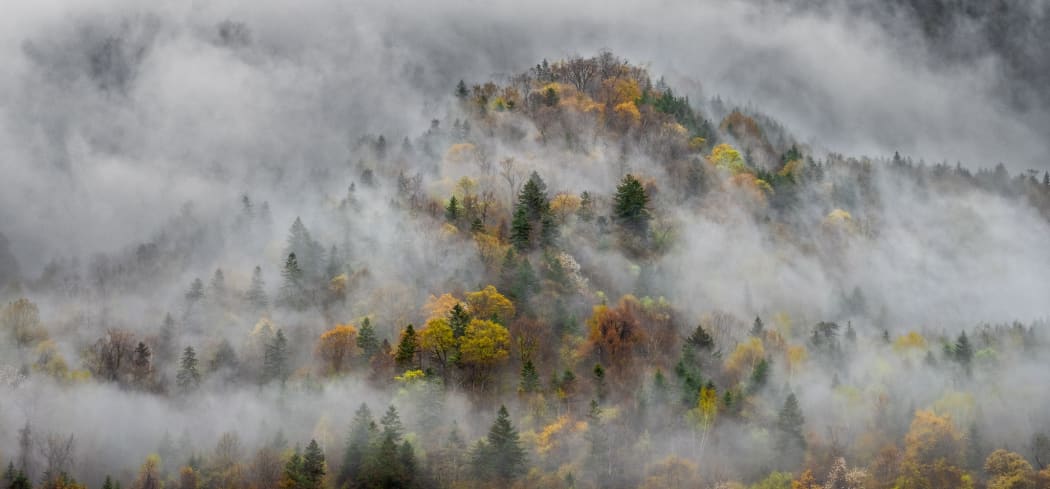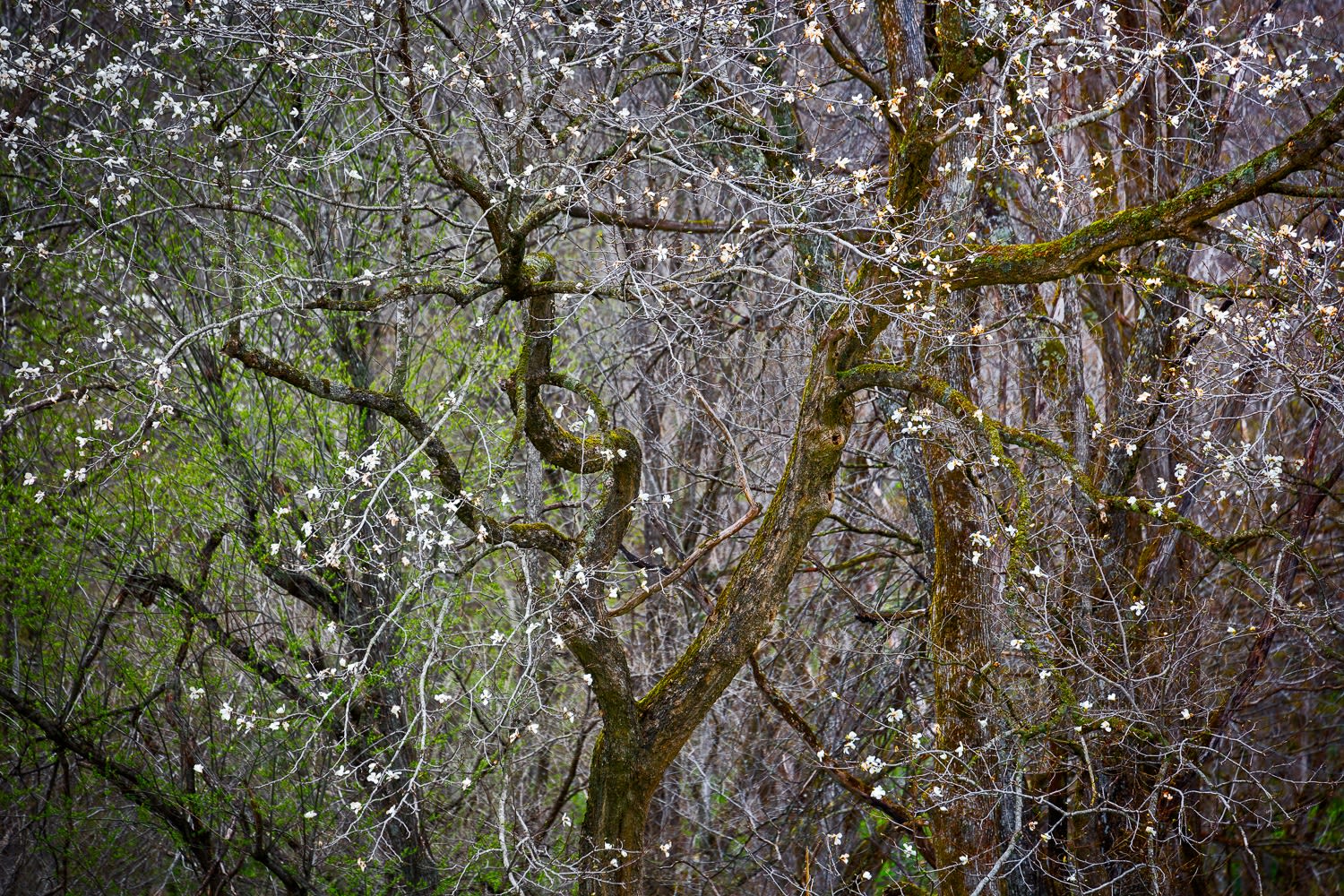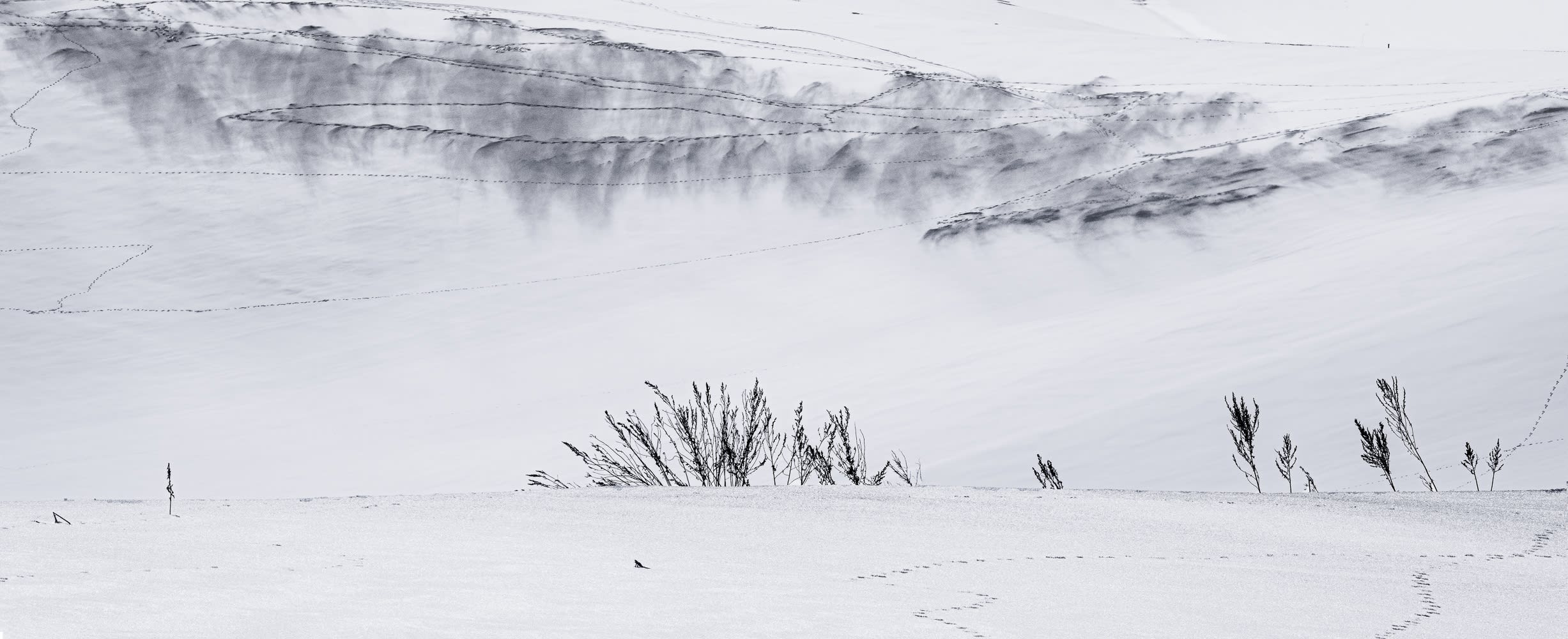
“If I could walk around I swear I'll leave
Won't take nothin' but a memory
From the house that built me”
-Song by Miranda Lambert “The House That Built Me”
Xuan-Hui Ng, originally from Singapore, lives and works in Tokyo. Her landscapes, taken in Japan, Iceland, India, Bhutan, and Canada remind me of this sentiment in Miranda Lambert’s lyrics. In a sense, nature is the house of which she feels so a part. Ng said “ All the negative thoughts that held my mind hostage for months were crowded out by [the landscape’s] beauty. I realized how tiny I was, relative to this universe. There’s so much beauty on earth, so much to live for and to explore. Grief made me look inwards, but discovering nature rekindled that spark of life in me, enabling me to look outwards again. I got over myself. I found hope.” What she expresses in these image is perhaps letting something that lies below in her subconscious surface, and in that way also connects to something in the viewer.
The landscapes are a metaphor for the emotions felt by the artist, but that we share in common with her. Replication, realism, in a sense a faithful replication of what is before the lens, is the drive for many landscape photographic artists, but not Ng. She is sharing a mental state through her prints and not a documentary or “mirror” view. Her work evokes an emotional shift that refreshes and exhales a visual meditation back at you. Looking at her work, time is suspended. A moment with this work is an interlude, between other moments where we relax, pause, and take a moment to breathe, to reclaim, a memory of something fundamental and needed in these turbulent times. The work is her own aesthetic, her appreciation of beauty, expressed in her own visual language.
Can we understand her sense of space and land? How she presents these landscapes is a choice influenced by artists of diverse cultures and periods of time. When asked who are the artists (photographic and non-photographic) that have most influenced her work, she responded Monet (French), Renoir (French), Chagall (Russian-French), Sumio Goto (Japanese) and Li Huayi (Chinese). A landscape can be presented as just beautiful, carefully composed as an Ansel Adams image, artfully like an Edward Weston, or documentary-like as Robert Adams. She chooses to capture a mood. What the artist creates emerges from their own unique set of experiences, cultural immersion, religious belief, if any, memories, and feelings that bubble forward. Her works are not to be judged by the accuracy of what she photographed. Our reaction to these works is, in part, subjective. How we experience the visual impact of the artwork is influenced, at a very visceral, fundamental, level by our personal set of experiences. What we take from looking at a landscape is colored by who we are, how and where we live, and the cultural markers that frame our behavior and beliefs.
How we engage with Ng’s images is also dependent on how we ourselves, engage with looking at our natural surroundings. The quality of engagement may be elevated by our willingness to be open to the symbols and markers within a landscape. Our ability to “see” is filtered through biases. There is the expected landscape, our preconceived notion of a place, where we’ve been or are familiar with, from whatever sources. From that preconceived notion we approach the image colored by what we think we know. If we see snow or fog or mountains, certain stereotypes of similar places or people we know may prevent us from “seeing” what hints or allegory is there. Is it a pristine landscape or is there evidence of mankind’s footprints that reflect and measure the passage of time? Are we open to the visual suggestion of others or do we compartmentalize emotions of “seeing” at someone else’s suggestion? Ng’s work is a transferable depiction of land and space, imprinted, not memory, that forces open our eyes.
Societal constructs imposed on us from an early age color how we “see.” Is there a difference in how our gender identity affects our perception of something as universal as a landscape? The “seeing” is both a window and a mirror. After years of gendered socialization, an experience taught and reinforced by the societies we belong to, will men and women pick up on the same visual cues in each image? How does this experience translate for gender non-conforming viewers, a multifaceted identity that defies binary categorization, and therefore defies a unified experience? Ng’s images are centered around a personal emotional experience and are meant to evoke emotion in the viewer as well. How does our socialized experience of gender shape our emotional response? The breadth of possible reactions to Ng’s work is endless, and that is the beauty of it. Each viewer may not see the same thing in each image, but we each will take away something, an experience of our own all the more precious for its uniqueness.

Xuan-Hui Ng, Metamorphosis #153, 2017
Metamorphosis #153, a starry pattern of cherry blossoms, draws us into this dense, gnarled, tree-like visual fairy tale. One might suspect that the denseness of living conditions in a country like Japan imprints a view in composition different than what one might feel living in the vastness of West Texas. Vastness of space does not predefine Ng’s approach, but she is conscious in her compositions that space affects composition. Her images range from high, vast panoramic elevations to the dense forest in Metamorphosis #153. There is a feeling of gaiety and adventure here. We might even feel invited to wander deeper and deeper into the swirl of these cherry blossoms, despite how anticipated their arrival, and how ephemeral their beauty. Cherry blossoms only bloom for one to two weeks each year and then decline and are gone. Yet, we seize, with anticipation, this interlude between bare trees and a short explosion of white to pink beauty.

Xuan-Hui Ng, Metamorphosis #168, 2017
Color in an image can convey mood and sensation. The photographer’s choice of color tone, muted or bright overly saturated colors, or somber black of white with degrees of contrast, are tools to manipulate reaction. Given Ng’s admitted emotional drive, images often are a swirl of more somber muted tones of color. We are then suddenly surprised by the ocean of sunflowers in Metamorphosis #168. Literal yet abstract, this is a composition with an exciting burst of yellow and green color. A “straight” image capture, one without manipulation, elevates us lightly onto our feet to run into this field. “I would say 95% is consciously composed in the camera. I use Photoshop to recreate the colors or the contrast that I saw because when photographing in the RAW format, the camera doesn’t accurately capture the colors seen by the naked eye. However, sometimes I do forget what I saw because of the time that has lapsed so it’s more accurate to say I use Photoshop to recreate what I thought I saw or remember.” This is an image that takes the viewer into a space yelling with expression - Look! See what I see!

Xuan-Hui Ng, Metamorphosis #16, 2019
The white landscape of Metamorphosis #16 has a visual “feel” of snow and fields that may reveal cultural cues for the region of the world in which the artist grew up. As an almost black & white image, there is a delicate, magical, painterly feel from the contrast between light and dark. This is very unlike a traditional black & white well-known landscape capturing the beauty of nature by photographers such as those by Ansel Adams or Robert Adams. One can sense clouds or fog on the transparent swishes of broad black that trigger that association, and perhaps the ridges of hills where the black is denser and darker. There appear to be tracks across the landscape in the foreground, and delicate lines that could be fences or ridge outlines in the background that draw our attention into the scene. Unlike the other landscapes, we wonder if there is cultural symbolism that resonates through an Asian cultural experience with a messaging that Western eyes may miss. Yet, the visual translation into our own mental language may not matter. The cues we discern may translate into thought, emotions, or feelings that are universal. Regardless of our mental language or translation, the visual expression in these images is liberating.
Remembrance #3, with abstracted swirls on the surface of water and a soft brown-lavender tone of light, is a dramatic expression of “seeing” that expands the repertoire of Xuan-Hui Ng. This is a literal visual abstraction, a caught moment snatched from the flow of nature. Ng is very aware of the time of day, and the intensity of light when the sun is at different points in the sky and how that affects the image. She comments: “Photographing some natural phenomena (e.g. diamond dust, snow and rain) and using long exposure gets trickier. While I have deliberately chosen the overall composition, what actually comes out (e.g. the swirl patterns of the petals) cannot be fully predicted.”

Xuan-Hui Ng, Remembrance #3, 2019
Images like Remembrance #3 engage within our selves an involuntary sensation we must acknowledge. These images are not meant to illustrate or educate us about something specific in the world like the landscape images of Richard Misrach’s Desert Cantos series. Her work opens us up to a visual experience that influences our sense of being and wellness. She does not distort nature, but captures that ephemeral Henri Cartier-Bresson “decisive moment” that triggers emotion in us like a pheromone. While a “traditional” landscape is a literal, realistic replication of the world, her images are not idealized, but in a sense romanticized. The image is beauty in nature that is ephemeral and temporary. A moment captured and preserved to be shared, embedded in memory and reflected upon.
For Xuan-Hui Ng, the beauty in nature is her sanctuary for comfort and solace. She seems to awaken a need in us to decipher her images. She has an openness, a character, a disposition to want to seek out and capture moments like these. She slows us down enough to “see” beauty in nature that, in our rush through life, we would otherwise miss. Her work gives us a second chance. Whether we feel there is a new voice in her presentation of landscapes, or whether we judge it an excellent performance, or photographic execution of nature, her work speaks. Unlike a scene that has been photographed many times, by many people, and becomes so ubiquitous, and commonplace, we are inoculated to the beauty that might be there, and the image takes on the pale of the everyday and mundane, what Ng has produced is refreshingly new. The images selected for this commentary reflect the depth of her vision, that she has an excellent command of seeing land and light, and memorializes memory on paper like a painter’s brush on canvas. It demonstrates that it does not matter in what language we speak. Her visual language converts to something we can all “see” and embrace, regardless of how our gender is defined, or the cultural fence posts that may control how we might otherwise think and communicate in words. Her inspiration comes from Western and Eastern culture, and from multiple periods in the history of artistic style. Without her capture of these landscapes with her “eye,” that visual moment would have passed as if it had never existed. It would have been like a tree that falls in the woods with no one there to hear it. So, there is a debt of gratitude that we owe to Xuan-Hui Ng for sharing.
